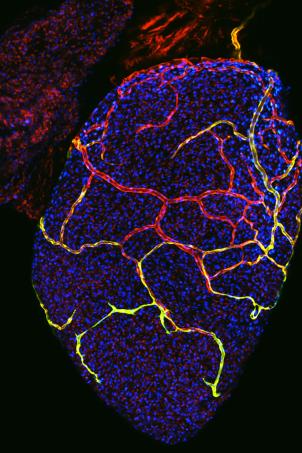I Heart Zebrafish
How a fish smaller than a pinky finger holds big clues to saving hearts

What do zebrafish and newborn babies have in common? Both are small, yet hold vast potential for the future. But these two organisms are more intertwined than you might think.
Ching-Ling (Ellen) Lien, PhD, of Children’s Hospital Los Angeles studies zebrafish because of their incredible regenerative capacity. The heart of this inch-long creature is no wider than the tip of a pen, yet its cells are mighty, allowing it to regenerate after extensive damage. Dr. Lien is looking to uncover the molecular pathways zebrafish use to regenerate so that medicine can one day apply this knowledge to regrow human hearts.
Heart failure is the leading cause of death worldwide, and not just for adults. Babies born with congenital cardiac defects can also experience heart failure because the physical structure of this vital organ is simply not strong enough. If new heart tissue can be regenerated by a patient’s own body, babies with severe heart defects wouldn’t have to depend on transplants.
While we are not there quite yet, Dr. Lien has made key discoveries that are bringing us closer to this goal. For example, she studied genetic zebrafish mutants to pinpoint key genes in the regeneration pathway. “Our lab is the first to discover that a signaling pathway called Cxcl12-Cxcr4 is critical for the development of coronary blood vessels,” she says. “These vessels support the growth and regeneration of heart tissue in the zebrafish. This opens the door for our understanding of the early signaling events in tissue regeneration.”
Findings like these show us that zebrafish, for their miniscule size, provide important information we can someday use to help babies thrive.
Image caption: coronary blood vessels surround and nourish a zebrafish heart
Image courtesy of Ellen Lien, PhD, Children’s Hospital Los Angeles and the Cellular Imaging Core at Children’s Hospital Los Angeles


